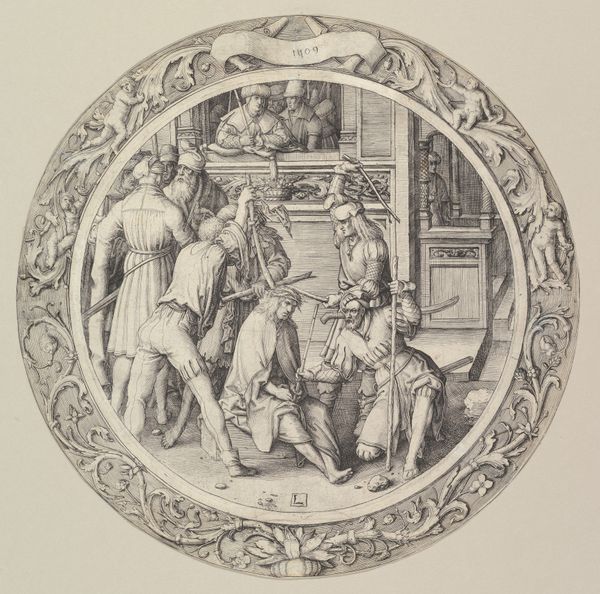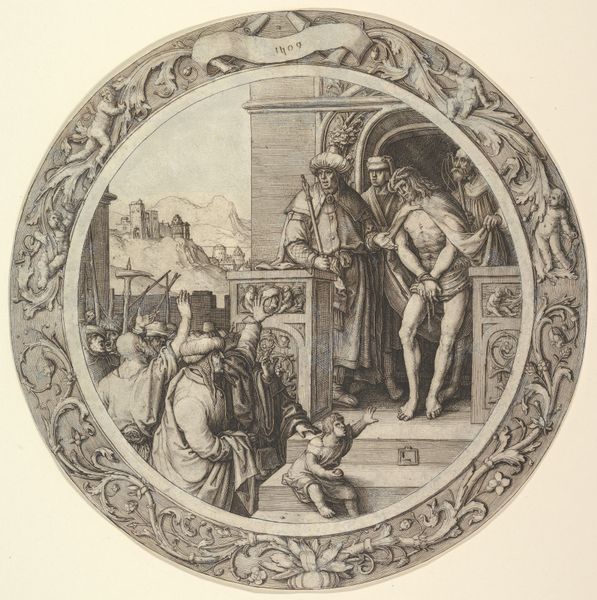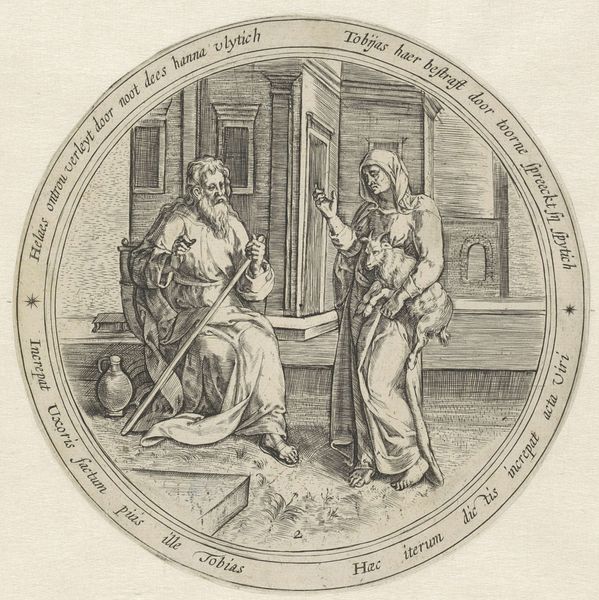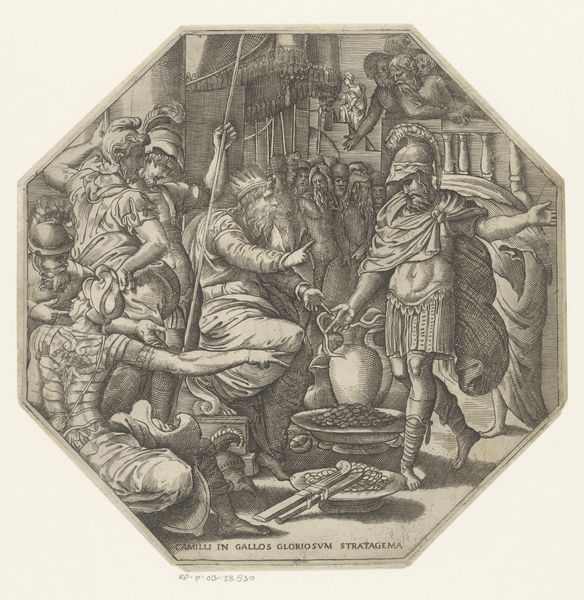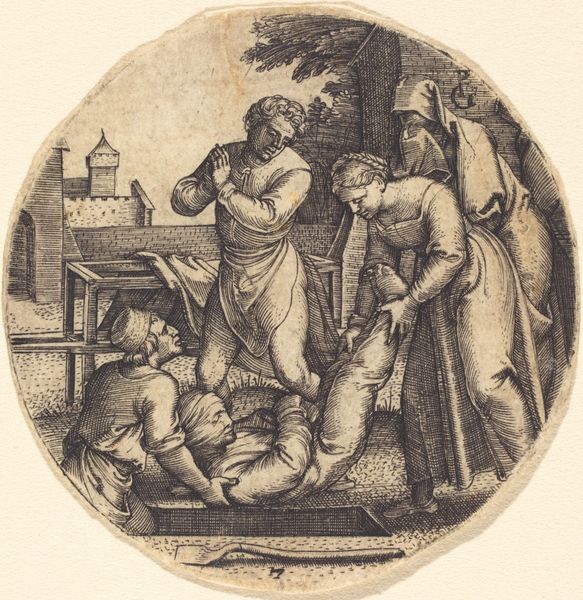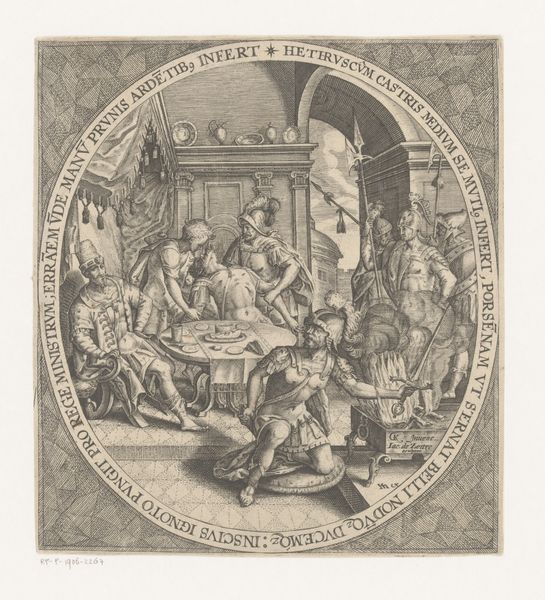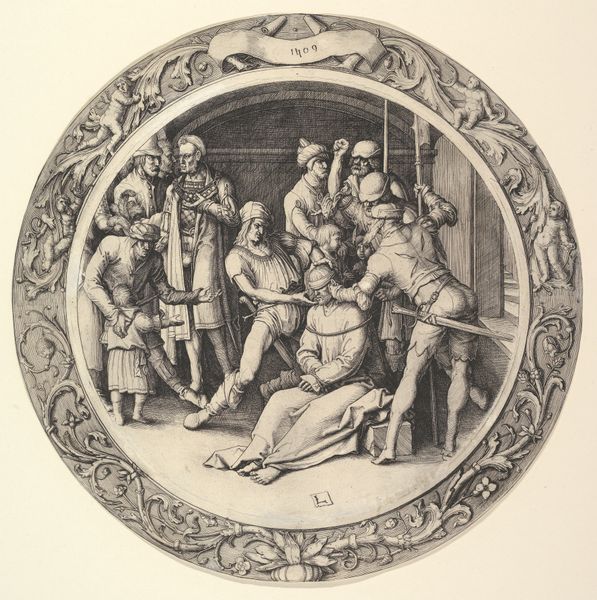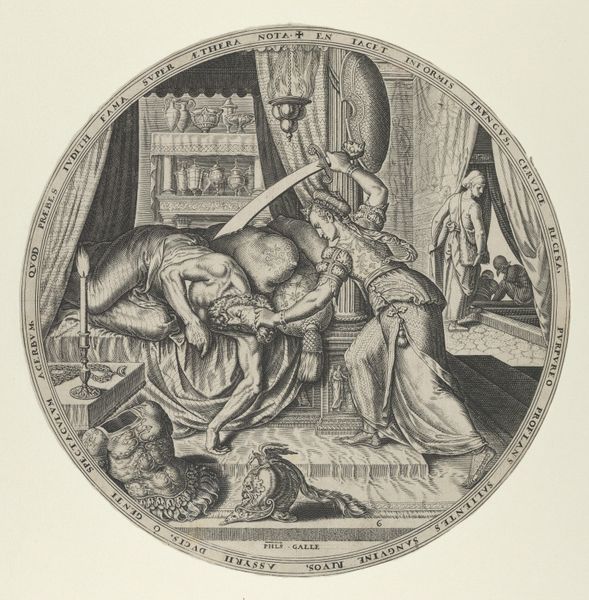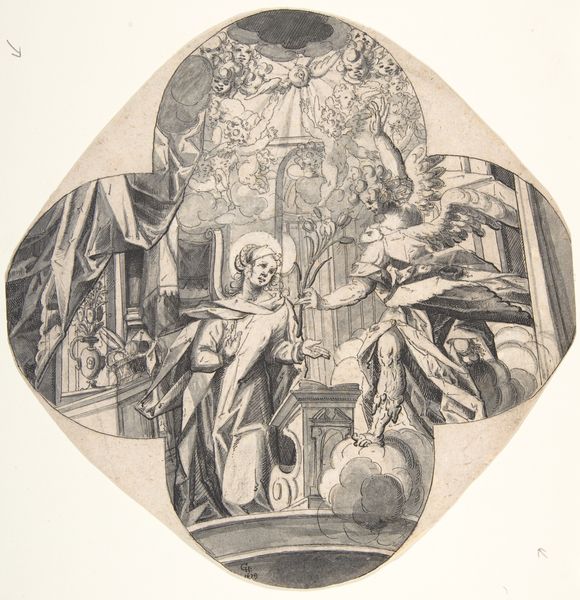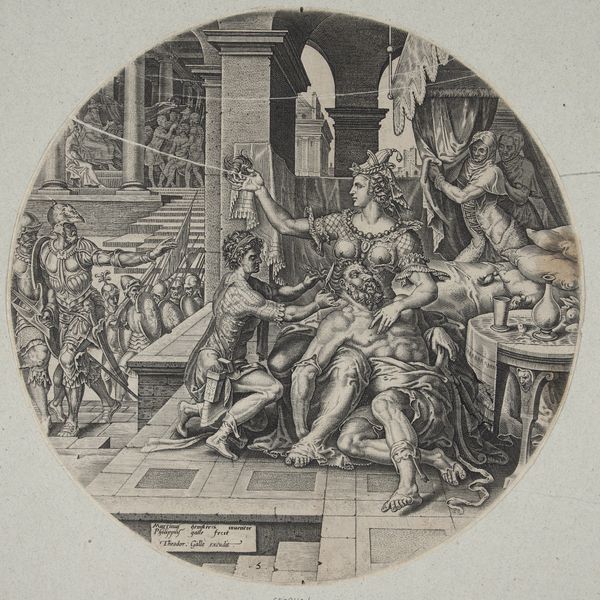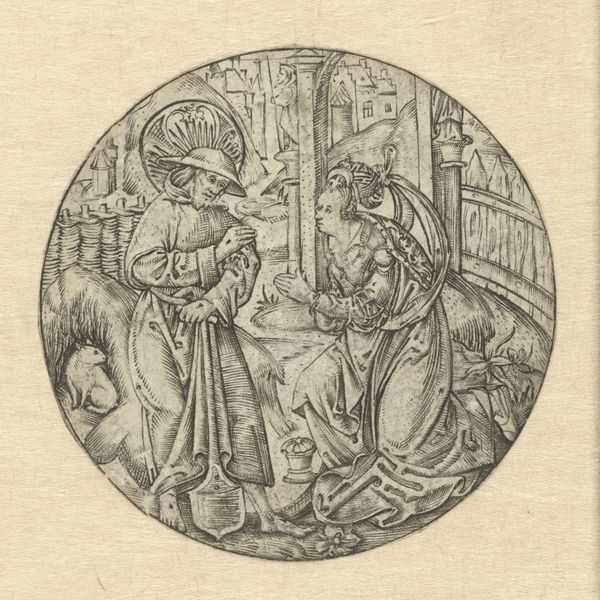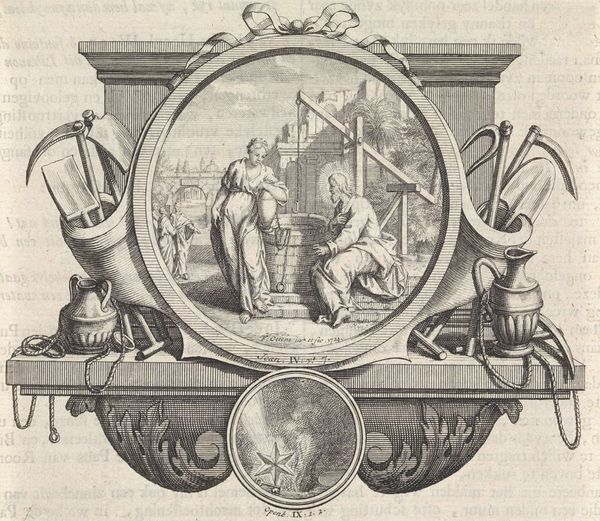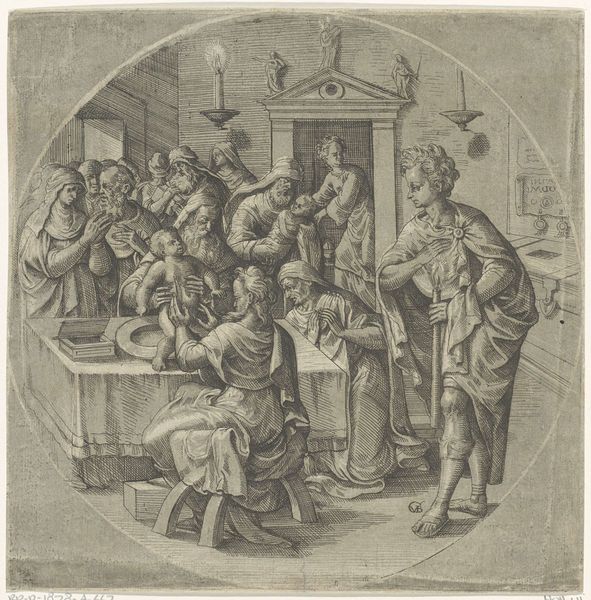
drawing, print, engraving
#
drawing
# print
#
figuration
#
soldier
#
men
#
line
#
history-painting
#
italian-renaissance
#
engraving
Dimensions: Diameter: 11 1/8 in. (28.3 cm)
Copyright: Public Domain
Editor: So, here we have Lucas van Leyden’s "The Flagellation, from the Circular Passion," created in 1509. It's a print, an engraving to be exact, and it strikes me as particularly brutal because it's contained within this delicate, circular frame. How does the historical context shape how we view a scene like this? Curator: Well, placing this print within its historical context highlights several crucial aspects. Consider the power dynamics inherent in the image and its accessibility as a print. The Passion cycle, a cornerstone of Christian narrative, was often employed to reinforce religious doctrine, but also reflects specific socio-political climates. The artist chose engraving to render it; this enabled the image to be widely disseminated and cheaply produced, increasing accessibility to the public. Think about it, who would have engaged with this and what would they feel about the represented public execution? Editor: That makes sense. The idea of widespread distribution certainly changes things. But the figures themselves, with their varying expressions… does that also connect to the socio-political climate? Curator: Absolutely. How are those figures arranged? What classes or stations do they appear to belong to? Look at Pontius Pilate, his placement and garments reflect established hierarchies, legitimizing authority. Consider the emotional effect that these sharp, linear depictions might have. How might such depictions be used to elicit specific responses from its viewers? Editor: I see. It's not just a religious scene, it's about reinforcing societal structures through religious narrative. That blend makes it powerful. Curator: Precisely. By analyzing how such imagery was used, displayed, and interpreted, we can better understand its function in early 16th-century society. Editor: I had never considered the social impact of the printmaking technique itself, and how it broadens viewership! Thank you for the new perspectives. Curator: It is so enriching to analyze how artworks have the ability to communicate to many audiences, then and now.
Comments
No comments
Be the first to comment and join the conversation on the ultimate creative platform.
